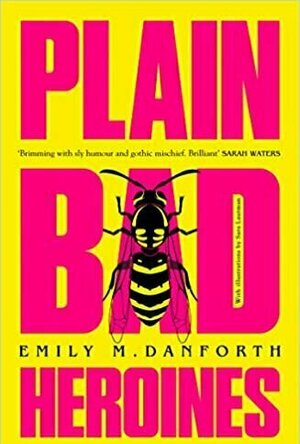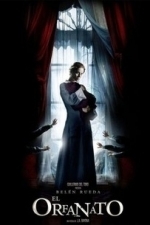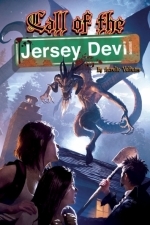Search
Heather Cranmer (2721 KP) rated Between the Devil and the Deep Blue Sea (Between, #1) in Books
Jun 6, 2018
(This review can be found on my blog <a href="http://themisadventuresofatwentysomething.blogspot.com/">The (Mis)Adventures of a Twenty-Something Year Old Girl</a>).
This is a book I'd been wanting to read for awhile. The whole gothic horror thing really piqued my interest. While this wasn't my favorite horror story, it was still a good read. I've also seen some reviews saying that this book was a lot like the Twilight series by Stephenie Meyer but I didn't think it was.
I must admit that the title is what caught my attention first. I love it, and I find that it's a very fitting title for the book.
The cover is the next thing that caught my attention, and while I don't think it really fits in with the story, it's still an interesting cover.
I enjoyed the world building very much. However, a majority of characters in this book had really peculiar names like Violet White, River West, True White, Sunshine, etc. Maybe it was just a coincidence, but I still found it strange that they all had extraordinary names. I loved the back story of everything which helped to set up the world building very nicely. The one thing that kind of annoyed me was the insta-love between River and Violet.
The pacing did start off a bit slow, but I hung in there. By about the third chapter, the book reeled me in, and my attention was focused solely on finding out what was going to happen and if River was truly a bad boy or just misunderstood.
I felt that the plot had some originality to it. River moves in to Violet's guest house and suddenly a bunch of weird things start happening. I really want to elaborate more on the plot, but I also don't want to give anything away. Let's just say the plot deals with the paranormal and romance. There is a plot twist. There's also a sort of cliff hanger ending since there's a second book in the series.
As for the characters, I thought they were alright even if they did seem a bit older than their actual ages of 16 and 17. I liked how Violet wasn't ashamed to be different. She was odd, yes, but that's what I loved about her. She seemed, for the most part, to be comfortable in her own skin. I didn't really know what to make of River. He was very mysterious and he lied...a lot! This made me not trust him at all, yet Violet was perfectly happy to trust River. (Okay, so Violet had one annoying trait). I liked Luke, and I didn't feel that he was as mean to Violet as what Violet led us to believe. In fact, I thought he was quite nice and caring. He was a bit of a ladies man, but the kid is 17 years old after all. I liked how Neely was like the protector of everyone. He did have a bit of a temper, but he was willing to do whatever it took to protect his friends and family. The character I really had a problem with was Brodie. He's such a stereotypical Texan, and that's what really made me upset. He came across as an uneducated hillbilly. I really did feel offended by the author for her portrayal of Texans.
The dialogue sounds more fitting for an adult novel as the teenagers in the book speak like they are much older than their 16 and 17 years. As I stated in the above paragraph, I was offended by the character of Brodie. His speech was so stereotypical and offensive. I've never even heard anyone from Texas speak the way Brodie spoke, and I was born and raised here in Texas! I think the author should've done a bit more research about the dialogue and dialect of Texas instead of just stereotyping. Other than that, the dialogue flowed smoothly and freely. The book is fairly violent, and there are some mild sexual situations. There is some swearing as well.
Overall, Between the Devil and the Deep Blue Sea is an intriguing read with a great plot. The world building is interesting, and the characters are likable even if one was extremely offensive.
I'd recommend this book to those aged 16+ who are fans of gothic horror or just horror in general.
<b>I'd give Between the Devil and the Deep Blue Sea by April Genevieve Tucholke a 3.75 out of 5.</b>
(I purchased a hardcover copy of this book with my own money from Amazon. No review was required).
This is a book I'd been wanting to read for awhile. The whole gothic horror thing really piqued my interest. While this wasn't my favorite horror story, it was still a good read. I've also seen some reviews saying that this book was a lot like the Twilight series by Stephenie Meyer but I didn't think it was.
I must admit that the title is what caught my attention first. I love it, and I find that it's a very fitting title for the book.
The cover is the next thing that caught my attention, and while I don't think it really fits in with the story, it's still an interesting cover.
I enjoyed the world building very much. However, a majority of characters in this book had really peculiar names like Violet White, River West, True White, Sunshine, etc. Maybe it was just a coincidence, but I still found it strange that they all had extraordinary names. I loved the back story of everything which helped to set up the world building very nicely. The one thing that kind of annoyed me was the insta-love between River and Violet.
The pacing did start off a bit slow, but I hung in there. By about the third chapter, the book reeled me in, and my attention was focused solely on finding out what was going to happen and if River was truly a bad boy or just misunderstood.
I felt that the plot had some originality to it. River moves in to Violet's guest house and suddenly a bunch of weird things start happening. I really want to elaborate more on the plot, but I also don't want to give anything away. Let's just say the plot deals with the paranormal and romance. There is a plot twist. There's also a sort of cliff hanger ending since there's a second book in the series.
As for the characters, I thought they were alright even if they did seem a bit older than their actual ages of 16 and 17. I liked how Violet wasn't ashamed to be different. She was odd, yes, but that's what I loved about her. She seemed, for the most part, to be comfortable in her own skin. I didn't really know what to make of River. He was very mysterious and he lied...a lot! This made me not trust him at all, yet Violet was perfectly happy to trust River. (Okay, so Violet had one annoying trait). I liked Luke, and I didn't feel that he was as mean to Violet as what Violet led us to believe. In fact, I thought he was quite nice and caring. He was a bit of a ladies man, but the kid is 17 years old after all. I liked how Neely was like the protector of everyone. He did have a bit of a temper, but he was willing to do whatever it took to protect his friends and family. The character I really had a problem with was Brodie. He's such a stereotypical Texan, and that's what really made me upset. He came across as an uneducated hillbilly. I really did feel offended by the author for her portrayal of Texans.
The dialogue sounds more fitting for an adult novel as the teenagers in the book speak like they are much older than their 16 and 17 years. As I stated in the above paragraph, I was offended by the character of Brodie. His speech was so stereotypical and offensive. I've never even heard anyone from Texas speak the way Brodie spoke, and I was born and raised here in Texas! I think the author should've done a bit more research about the dialogue and dialect of Texas instead of just stereotyping. Other than that, the dialogue flowed smoothly and freely. The book is fairly violent, and there are some mild sexual situations. There is some swearing as well.
Overall, Between the Devil and the Deep Blue Sea is an intriguing read with a great plot. The world building is interesting, and the characters are likable even if one was extremely offensive.
I'd recommend this book to those aged 16+ who are fans of gothic horror or just horror in general.
<b>I'd give Between the Devil and the Deep Blue Sea by April Genevieve Tucholke a 3.75 out of 5.</b>
(I purchased a hardcover copy of this book with my own money from Amazon. No review was required).
Kristy H (1252 KP) rated Plain Bad Heroines in Books
Dec 17, 2020
Plain Bad Heroines was one of my most anticipated reads of the year. I am a sucker for a lesbian tale. Add in a Gothic New England boarding school for girls? Sold.
The story centers around two time periods. The first, 1902, at the Brookhants School for Girls, run by Libbie Brookhants. A book by a young writer, Mary MacLane has come out--one that's incredibly scandalous for the times. Two Brookhants girls, Flo and Clara, are obsessed with it and establish The Plain Bad Heroine Society. The two are in love, meeting in secret--until they are attacked by yellow jackets at their hiding spot, a copy of the book found with them. A few years later the school closes, but not until after more scandal and death. Now, our second period, over a hundred years later, where Merritt Emmons, a young writer, publishes a book about Flo and Clara's story. It inspires a horror film starring Harper Harper, a famous lesbian actress. Harper will be playing Flo and B-list actress Audrey Wells, Clara. Filming on-site at the abandoned Brookhants site, the three women converge. But soon, weird things start happening, and the curse of Brookhants seems back to haunt the set--and our three modern-day heroines.
This book is absolutely enthralling at times. I flew through these 619 pages, that's for sure. My notes state "very lesbian," which is, of course, a major plus for me. Believe me, we don't get a lot of books starring ourselves. And you know, where we are killed off by swarms of yellow jackets. I honestly found both storylines compelling. It's hard not to fall a bit in love with Harper Harper, the charismatic celebrity (out!) lesbian. And 1902 isn't just about Clara and Flo, but Libbie Brookhants and her life trying to run a cursed school in the early 1900s. Honestly, the pages really flew by most of the time. Though, there are certainly moments where I felt some of the story could have been cut.
And yes, the narrative style is different, though it really adds to the uniqueness of the book. It's basically told by an omnipresent narrator, talking directly to the reader. There are footnotes, often humorous ones, and the end result is something you don't often find. For the most part, I felt like Danforth pulled it off, too. I do think Libbie was a little more fully developed than Merritt, Harper, and Audrey, but that also may have been because that trio could come across as a bit spoiled at times.
Probably my two biggest issues with this book (regretfully): for a Gothic horror novel, it's not really that scary. There are a few creepy and eerie moments, especially in the beginning, but it never really builds up to that terrifying moment that you're expecting. And, somewhat related, the ending. We read and stick with our various tales for the entire time and then... poof! Everything just fizzles out. I was so bummed. The ending was such a disappointment after all I'd read and kept this from being a full-fledged 4 or 4.5-star read. I couldn't believe it after what we'd been through. It was like even the author was tired.
So, overall, this is an original and fascinating read. I'm certainly still advising you to read it (especially if you're queer or enjoy reading queer fiction). Just be prepared that the ending may not have that big scary moment you're expecting. 3.5 stars.
The story centers around two time periods. The first, 1902, at the Brookhants School for Girls, run by Libbie Brookhants. A book by a young writer, Mary MacLane has come out--one that's incredibly scandalous for the times. Two Brookhants girls, Flo and Clara, are obsessed with it and establish The Plain Bad Heroine Society. The two are in love, meeting in secret--until they are attacked by yellow jackets at their hiding spot, a copy of the book found with them. A few years later the school closes, but not until after more scandal and death. Now, our second period, over a hundred years later, where Merritt Emmons, a young writer, publishes a book about Flo and Clara's story. It inspires a horror film starring Harper Harper, a famous lesbian actress. Harper will be playing Flo and B-list actress Audrey Wells, Clara. Filming on-site at the abandoned Brookhants site, the three women converge. But soon, weird things start happening, and the curse of Brookhants seems back to haunt the set--and our three modern-day heroines.
This book is absolutely enthralling at times. I flew through these 619 pages, that's for sure. My notes state "very lesbian," which is, of course, a major plus for me. Believe me, we don't get a lot of books starring ourselves. And you know, where we are killed off by swarms of yellow jackets. I honestly found both storylines compelling. It's hard not to fall a bit in love with Harper Harper, the charismatic celebrity (out!) lesbian. And 1902 isn't just about Clara and Flo, but Libbie Brookhants and her life trying to run a cursed school in the early 1900s. Honestly, the pages really flew by most of the time. Though, there are certainly moments where I felt some of the story could have been cut.
And yes, the narrative style is different, though it really adds to the uniqueness of the book. It's basically told by an omnipresent narrator, talking directly to the reader. There are footnotes, often humorous ones, and the end result is something you don't often find. For the most part, I felt like Danforth pulled it off, too. I do think Libbie was a little more fully developed than Merritt, Harper, and Audrey, but that also may have been because that trio could come across as a bit spoiled at times.
Probably my two biggest issues with this book (regretfully): for a Gothic horror novel, it's not really that scary. There are a few creepy and eerie moments, especially in the beginning, but it never really builds up to that terrifying moment that you're expecting. And, somewhat related, the ending. We read and stick with our various tales for the entire time and then... poof! Everything just fizzles out. I was so bummed. The ending was such a disappointment after all I'd read and kept this from being a full-fledged 4 or 4.5-star read. I couldn't believe it after what we'd been through. It was like even the author was tired.
So, overall, this is an original and fascinating read. I'm certainly still advising you to read it (especially if you're queer or enjoy reading queer fiction). Just be prepared that the ending may not have that big scary moment you're expecting. 3.5 stars.
JT (287 KP) rated The Orphanage (2007) in Movies
Mar 10, 2020
This is an eerie and creepy Spanish horror/thriller and was an outstanding achievement for foreign film. Executive produced by Guillermo del Toro the film centres around a young woman returning to her childhood home to open an Orphanage for disabled children.
The couples young son Simon is able to run freely around the old gothic house and play to his heart’s content, but when he begins playing with an imaginary friend things start to take a sinister turn.
The Orphanage is beautifully shot and the setting could not be more apt for a ghost story. The surroundings do enough to make the spine chill before we even catch sight of any odd goings on – but when we do it’s subtle, yet frightening.
The plot doesn’t need to rely on buckets of gore. Maybe with the exception of one particular scene. Instead it takes the audience on a roller coaster journey by manipulating their senses to what they “may or may not” have seen.
The acting too deserves a mention and Belen Rueda who plays Laura displays great emotional prowess as a mother who is on the verge of collapsing with only her husband Carlos (Fernando Cayo) to offer a glimmer of support. While there may be similarities drawn from other films of this genre; such as The Others and The Shining it doesn’t try to copy or imitate it in any shape or form.
Without spoiling it, the ending is one that will leave film goers everywhere asking many questions and in some cases these may never be answered, something which I love. It’s a brilliant and well scripted film and one I would highly recommend.
The couples young son Simon is able to run freely around the old gothic house and play to his heart’s content, but when he begins playing with an imaginary friend things start to take a sinister turn.
The Orphanage is beautifully shot and the setting could not be more apt for a ghost story. The surroundings do enough to make the spine chill before we even catch sight of any odd goings on – but when we do it’s subtle, yet frightening.
The plot doesn’t need to rely on buckets of gore. Maybe with the exception of one particular scene. Instead it takes the audience on a roller coaster journey by manipulating their senses to what they “may or may not” have seen.
The acting too deserves a mention and Belen Rueda who plays Laura displays great emotional prowess as a mother who is on the verge of collapsing with only her husband Carlos (Fernando Cayo) to offer a glimmer of support. While there may be similarities drawn from other films of this genre; such as The Others and The Shining it doesn’t try to copy or imitate it in any shape or form.
Without spoiling it, the ending is one that will leave film goers everywhere asking many questions and in some cases these may never be answered, something which I love. It’s a brilliant and well scripted film and one I would highly recommend.
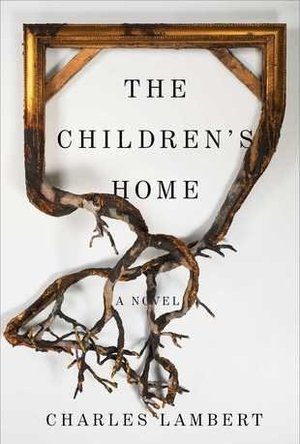
The Children's Home
Book
For fans of Shirley Jackson, Neil Gaiman, Roald Dahl, and Edward Gorey, a beguiling and disarming...
Jesters_folly (230 KP) rated Mr Harrigan's Phone (2022) in Movies
Oct 10, 2022
Contains spoilers, click to show
Mr Harringan's phone is a film based on a short story by Stephen King. Like a lot of Kings work the film is a slow burn but one without much of a pay off.
Mr Harringan's phone follows Craig, a young boy who is hired by the reclusive Mr Harringan. After working for him for a few years Mr Harringan dies. During his period of grief Craig phones Mr Harringan's old phone and tells him about the problems he is having with a bully, the bully dies soon after and Craig is sure the dead Mr Harringan has something to do with it.
Mr Harringan's phone has the potential to be a great ghost film but it doesn't manage to pull it off. The first 40 to 50 minutes of the film builds up the relationship between Craig and Mr Harringan leaving around an hour for the spooky stuff. However there is little actual horror, there are only 2 deaths due to the ghost and you don't see either of them. The film give what could be natural reasons for the deaths and tries to focuse on the effect they have on Craig as he thinks that he caused them but even this seems lacking.
The film feels like it's trying to be a 'classic' set in the modern day, like a Charles Dickens novel set in the naughties and it does pull this off but still seems to be lacking something.
If you are looking for something like the ring then this probably isn't for you but if you want a slow burn in the gothic/Dickens vain then it may be worth a watch.
Mr Harringan's phone follows Craig, a young boy who is hired by the reclusive Mr Harringan. After working for him for a few years Mr Harringan dies. During his period of grief Craig phones Mr Harringan's old phone and tells him about the problems he is having with a bully, the bully dies soon after and Craig is sure the dead Mr Harringan has something to do with it.
Mr Harringan's phone has the potential to be a great ghost film but it doesn't manage to pull it off. The first 40 to 50 minutes of the film builds up the relationship between Craig and Mr Harringan leaving around an hour for the spooky stuff. However there is little actual horror, there are only 2 deaths due to the ghost and you don't see either of them. The film give what could be natural reasons for the deaths and tries to focuse on the effect they have on Craig as he thinks that he caused them but even this seems lacking.
The film feels like it's trying to be a 'classic' set in the modern day, like a Charles Dickens novel set in the naughties and it does pull this off but still seems to be lacking something.
If you are looking for something like the ring then this probably isn't for you but if you want a slow burn in the gothic/Dickens vain then it may be worth a watch.
Connor Sheffield (293 KP) rated Call of the Jersey Devil in Books
May 25, 2017
Brilliant humour (2 more)
Horror
Written by one of my favourite Gothic musicians, Aurelio Voltaire
Hilarious, Gruesome and a brilliantly written
Aurelio Voltaire has always been brilliantly funny and witty in his work. His music is something I'd recommend listening to if you haven't already, don't let the Goth genre allow your mine to judge before you listen to it, because I promise you, it's not what you expect.
This book of his, is as brilliantly written as his lyrics, and Voltaire knows how to write a gruesome, horrifying adventure that includes friendship, family curses, Himself (as the washed up Goth singer), the undead, and of course legendary beast known as The Jersey Devil. Voltaire was born and raised in New Jersey and he did not enjoy his years as a young Goth (though he didn't know he fit into a stereotype back then) as people ridiculed him, and the other kids bullied him. He has a son called 'Bomb New Jersey' and I believe he references these thoughts in other areas of his work as well.
Back to the book however, the tale begins by telling us how the Jersey Devil was banished from this realm on earth and then it jumps to present day. The first chapter is exciting and gripping, the next chapter is brilliant and hilarious, and includes a dildo lightsaber fight....yes you read that right. The mall rats are best friends, but they argue with one another a lot, and this is how the book gets your attention. You keep reading to see how their relationships evolve, and how they band together to help one another survive the hellish nightmare that unfolds in the Pine Barrens of New Jersey.
The detail in this book is written to give you gruesome images, of the grotesque undead, the large stature of the Jersey Devil, and the unearthly noise it makes.
I have met Aurelio Voltaire twice at Whitby Goth Weekend, and on the second time, I had the honour of being on stage with him, and a handful of other audience members, in order to be his Hellish choir that night, and it was incredible. I have my copy of the book signed and that makes it even more valuable to me. It's a great read, and I highly recommend to any fan of horror, and macabre.
This book of his, is as brilliantly written as his lyrics, and Voltaire knows how to write a gruesome, horrifying adventure that includes friendship, family curses, Himself (as the washed up Goth singer), the undead, and of course legendary beast known as The Jersey Devil. Voltaire was born and raised in New Jersey and he did not enjoy his years as a young Goth (though he didn't know he fit into a stereotype back then) as people ridiculed him, and the other kids bullied him. He has a son called 'Bomb New Jersey' and I believe he references these thoughts in other areas of his work as well.
Back to the book however, the tale begins by telling us how the Jersey Devil was banished from this realm on earth and then it jumps to present day. The first chapter is exciting and gripping, the next chapter is brilliant and hilarious, and includes a dildo lightsaber fight....yes you read that right. The mall rats are best friends, but they argue with one another a lot, and this is how the book gets your attention. You keep reading to see how their relationships evolve, and how they band together to help one another survive the hellish nightmare that unfolds in the Pine Barrens of New Jersey.
The detail in this book is written to give you gruesome images, of the grotesque undead, the large stature of the Jersey Devil, and the unearthly noise it makes.
I have met Aurelio Voltaire twice at Whitby Goth Weekend, and on the second time, I had the honour of being on stage with him, and a handful of other audience members, in order to be his Hellish choir that night, and it was incredible. I have my copy of the book signed and that makes it even more valuable to me. It's a great read, and I highly recommend to any fan of horror, and macabre.
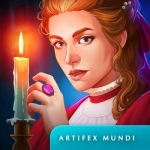
Scarlett Mysteries: Cursed Child (Full)
Games and Stickers
App
FANTASTIC HIDDEN OBJECT PUZZLE ADVENTURE GAME FROM THE CREATORS OF ENIGMATIS AND GRIM LEGENDS! ...

The Doctor Dissected: A Cultural Autopsy of the Burke and Hare Murders
Book
A series of bizarre disappearances filled the citizens of early nineteenth-century Scotland with...
Lyndsey Gollogly (2893 KP) rated The Frangitelli Mirror in Books
May 30, 2023
69 off 235
Kindle
The Frangitelli Mirror
By G.R. Thomas
⭐️⭐️⭐️⭐️⭐️
In 1915 a book was stolen, a crow appeared, and fate dealt its hand.
Rose Carbonelli sees ghosts.
She doesn’t sleep.
She watches every corner, studies every shadow, listens to the screams that no one else hears.
Rose Carbonelli is terrified.
Her father hasn’t been heard from since he volunteered to go to war in 1915.
The money ran out a year ago, her mother, Edith, is fading away.
Rose needs a job to save them both, and an excuse to flee the ghosts of her home.
When Rutherford House advertises for a lady’s maid, Rose seizes the opportunity.
A wage to save her mother, food to fill her belly, and an escape from the dead that occupy the shadows…
It seems just so perfect.
But is it the escape Rose has been dreaming of?
Is there truth to the rumours about Rutherford House? What lurks within the bones of it? Why has the Lady Mary Rutherford not been seen in over a decade?
Is this the perfect escape, or is it another nightmare Rose could never have imagined?
I was so lucky and so thankful to receive this ARC!
See I had a feeling I would like it as I loved her last gothic horror but this was something else it was brilliant and I loved it.
I read this at night and it just added to the creepiness I have to keep checking my dark corners. The story was compelling it kept you wanting more. The characters were so well written you became invested especially in Rose. I just can’t praise it enough!!
Amazing!
Kindle
The Frangitelli Mirror
By G.R. Thomas
⭐️⭐️⭐️⭐️⭐️
In 1915 a book was stolen, a crow appeared, and fate dealt its hand.
Rose Carbonelli sees ghosts.
She doesn’t sleep.
She watches every corner, studies every shadow, listens to the screams that no one else hears.
Rose Carbonelli is terrified.
Her father hasn’t been heard from since he volunteered to go to war in 1915.
The money ran out a year ago, her mother, Edith, is fading away.
Rose needs a job to save them both, and an excuse to flee the ghosts of her home.
When Rutherford House advertises for a lady’s maid, Rose seizes the opportunity.
A wage to save her mother, food to fill her belly, and an escape from the dead that occupy the shadows…
It seems just so perfect.
But is it the escape Rose has been dreaming of?
Is there truth to the rumours about Rutherford House? What lurks within the bones of it? Why has the Lady Mary Rutherford not been seen in over a decade?
Is this the perfect escape, or is it another nightmare Rose could never have imagined?
I was so lucky and so thankful to receive this ARC!
See I had a feeling I would like it as I loved her last gothic horror but this was something else it was brilliant and I loved it.
I read this at night and it just added to the creepiness I have to keep checking my dark corners. The story was compelling it kept you wanting more. The characters were so well written you became invested especially in Rose. I just can’t praise it enough!!
Amazing!
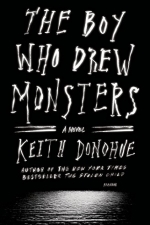
The Boy Who Drew Monsters
Book
From the New York Times bestselling author of The Stolen Child comes a hypnotic literary horror...

